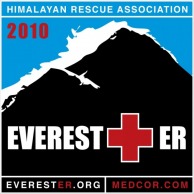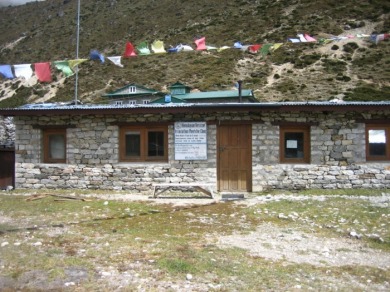www.EdonEverest.com
From August to December 2009, Jen and I volunteered for the Himalayan Rescue Association in the village of Pheriche on the Everest Base Camp Trek in Nepal. The Himalayan Rescue Association (HRA) is a voluntary non-profit organisation formed in 1973 with an objective to reduce casualties in the Nepalese Himalayas, especially keeping in view the increasing number of Nepalese and foreigners who trek up into the remote wilderness. The HRA provides vital medical care to the local population of Nepal as well as people visiting the area. The Everest ER clinic was established by Luanne Freer during the 2003 Everest 50th anniversary spring climbing season (to visit their individual websites click on the links above).
Having spent a significant period of time being involved with the HRA, and seeing the great work which it undertakes, I wanted to find a way of helping them and Everest ER (an off-shoot of the HRA located at Everest Basecamp) continue to save lives. I had already spoken to my good friends at Himalayan Ecstasy about climbing Everest in 2010 and the chance to use the expedition as an opportunity to both raise money and awareness of the charities seemed too good to miss.
So why is the HRA such a good cause? and why should anyone part with their hard earned cash to help them out? Firstly it is important that people understand what the HRA provides, and that is help - medical help when people most need it. During the three months we spent in Pheriche, we saw nearly 600 patients and the aid post in Manang on the Anna Purna Circuit saw a similar number. The charities survive through donations from tourists/trekkers that come through the area and contributions from Western patients. This enables the charities to provide healthcare to the local population and any Nepalis who are coming through the villages (i.e. porters).
All of the doctors at the clinic are volunteers, any donations you might kindly decide to make won't go to lining anyone's pocket. Instead it will help keep alive the medical facilities which so many people rely on. We had patients arrive on our doorstep 24/7. Some were in a coma, many had High Altitude Cerebral Edema (HACE) and High Altitude Pulmonary Edema (HAPE) - life threatening illnesses. If you want to know more about the individual charities then please click on the links above, or feel free to get in touch with me at [email protected]
Thanks
Ed
All of the doctors at the clinic are volunteers, any donations you might kindly decide to make won't go to lining anyone's pocket. Instead it will help keep alive the medical facilities which so many people rely on. We had patients arrive on our doorstep 24/7. Some were in a coma, many had High Altitude Cerebral Edema (HACE) and High Altitude Pulmonary Edema (HAPE) - life threatening illnesses. If you want to know more about the individual charities then please click on the links above, or feel free to get in touch with me at [email protected]
Thanks
Ed





